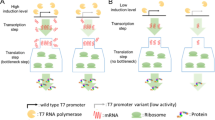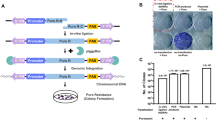Abstract
Receptor oligomerization plays a key role in maintaining genome stability and restricting protein mutagenesis. When properly folded, protein monomers assemble as oligomeric receptors and interact with environmental ligands. In a gene-centered view, the ligand specificity expressed by these receptors is assumed to be causally predetermined by the cell genome. However, this mechanism does not fully explain how differentiated cells have come to express specific receptor repertoires and which combinatorial codes have been explored to activate their associated signaling pathways. It is our contention that the plasma membrane acts as the locus where several contextual cues may be integrated. As such it allows the semiotic selection of those receptor configurations that provide cells with the minimum essential requirements for agency. The occurrence of protein misfolding makes it impossible for receptor monomers to assemble along the membrane and to sustain meaningful relationships with environmental ligands. How could a cell lineage deal with these loss-of-function mutations during evolution and restrain gene redundancy accordingly? In this paper, we will be arguing that the easiest way for bacteria clones to accomplish this goal is by getting rid of cells expressing mutated receptor proteins. The mechanism sustaining this cell selection is also occurring in many somatic tissues and its function is currently believed to counteract in vivo protein mutagenesis. Our discussion will be mainly focused on the significance and semiotic nature of the interplay between membrane receptors and the epigenetic control of gene expression, as mediated by the control of mismatched repairing and protein folding mechanisms.
Similar content being viewed by others
References
Abel, D. L., & Trevors, J. T. (2005). Three subsets of sequence complexity and their relevance to biopolymeric information. Theoretical Biology and Medical Modelling, 2, 29.
Anelli, T., & Sitia, R. (2008). Protein quality control in the early secretory pathway. EMBO Journal, 27, 315–327.
Bateson, G. (1972). Steps to an ecology of mind. San Francisco: Chandler Publishing Company.
Bateson, G. (1979). Mind and nature: a necessary unity. New York: EP Dutton.
Bebenek, K., Pedersen, L. C., & Kunkel, T. A. (2011). Replication infidelity via a mismatch with Watson-Crick geometry. Proceedings of National Academy of Sciences, USA, 108, 1862–1867. doi:10.1073/pnas.1012825108.
Biebermann, H., Schöneberg, T., Hess, C., Germak, J., Gudermann, T., & Grüters, A. (2001). The first activating TSH receptor mutation in transmembrane domain 1 identified in a family with non autoimmune hyperthyroidism. Journal of Clinical Endocrinology and Metabolism, 86, 4429–4433.
Bronner, C., Fuhrmann, G., Chédin, F. L., Macaluso, M., & Dhe-Paganon, S. (2009). UHRF1 links the histone code and DNA methylation to ensure faithful epigenetic memory inheritance. Genetics & Epigenetics, 2, 29–36.
Bruni, L. E. (2007). Cellular semiotics and signal transduction. In M. Barbieri (Ed.), Introduction to Biosemiotics (pp. 365–408). Dordrecht: Springer.
Bruni, L. E. (2008). Gregory Bateson’s relevance to current molecular biology. In J. Hoffmeyer (Ed.), A legacy for living systems. Gregory Bateson as Precursor to Biosemiotics, 2, 93–119.
Cariani, P. (1998). Towards an evolutionary semiotics: The emergence of new sign-functions in organisms and devices. In G. Van de Vijver, S. Salthe, & M. Delpos (Eds.), Evolutionary systems (pp. 359–377). Dordrecht: Kluwer.
Cheng, W.-C., & Hardwick, J. M. (2007). A quorum on bacterial programmed cell death. Molecular Cell, 28, 515–517.
Conn, P. M., Ulloa-Aguirre, A., Ito, J., & Janovick, J. A. (2007). G protein-coupled receptor trafficking in health and disease: lessons learned to prepare for therapeutic mutant rescue in vivo. Pharmacological Review, 59, 225–250.
Csete, M., & Doyle, J. (2004). Bow ties, metabolism and disease. Trends in Biotechnology, 22, 446–450.
Dohet, C., Wagner, R., & Radman, M. (1985). Repair of defined single base-pair mismatches in Escherichia coli. Proceedings of National Academy of Sciences, USA, 82, 503–505.
Doutriaux, M.-P., Wagner, R., & Radman, R. (1986). Mismatch-stimulated killing. Proceedings of National Academy of Sciences, USA, 83, 2576–2578.
Drummond, D. A., & Wilke, C. O. (2008). Mistranslation-induced protein misfolding as a dominant constraint on coding-sequence evolution. Cell, 134, 341–352.
Eigen, M. (1971). Self-organization of matter and the evolution of biological molecules. Naturwissenschaften, 10, 465–523.
Engelberg-Kulka, H., Amitai, S., Kolodkin-Gal, I., & Hazan, R. (2006). Bacterial programmed cell death and multicellular behavior in bacteria. PLoS Genetics, 2(10), e135.
Engelberg-Kulka, H., Sat, B., Reches, M., Amitai, S., & Hazan, R. (2004). Bacterial programmed cell death systems as targets for antibiotics. Trends in Microbiology, 12, 66–71.
Fanelli, F. (2007). Dimerization of the lutropin receptor: insights from computational modeling. Molecular and Cell Endocrinology, 260–262, 59–64.
Fink, A. L. (1999). Chaperone-mediated protein folding. Physiological Reviews, 79, 425–449.
Fink, S. L., & Cookson, B. T. (2005). Apoptosis, pyroptosis, and necrosis: mechanistic description of dead and dying eukaryotic cells. Infection and Immunity, 73, 1907–1916.
Foster, P. L. (1993). Adaptive mutation: the use of adversity. Annual Review of Microbiology, 47, 467–504.
Gallagher, M. J., Ding, L., Maheshwari, A., & Macdonald, R. L. (2007). The GABAA receptor alpha1 subunit epilepsy mutation A322D inhibits transmembrane helix formation and causes proteasomal degradation. Proceedings of National Academy of Sciences, USA, 104, 1299–3004.
Giorgi, F., & Bruni, L. E. (2011). The semiosis of germ cell interactions in ovarian and embryonic development. In K. Kull, J. Hoffmeyer, A. Sharov (Eds.), Semiotic approaches to evolution. Springer-Verlag. (forthcoming).
Giorgi, F., Bruni, L. E., & Maggio, R. (2010). Receptor Oligomerization as a process modulating cellular semiotics. Biosemiotics, 3, 157–176.
Giorgi, F., Maggio, R., & Bruni, L. E. (2011). Are olfactory receptors really olfactive? Biosemiotics, 4, 331–347.
Gorlich, D., Artmann, S., & Dittrich, P. (2011). Cells as semantic systems. Biochimica et Biophysica Acta. doi:10.1016/j.bbagen.2011.04.004.
Gudwin, R. R. (2001). Semiotic synthesis and semionic networks. In SEE’01–2nd International Conference on Semiotics, Evolution and Energy. Toronto: University of Toronto.
Gur, E., & Sauer, R. T. (2008). Recognition of misfolded proteins by Lon, a AAA + protease. Genes & Development, 22, 2267–2277.
Harfe, B. D., & Jinks-Robertson, S. (2000). DNA Mismatch repair and genetic instability. Annual Review of Genetics, 34, 359–399.
Hershberg, R., & Petrov, D. A. (2009). General rules for optimal codon choice. PLoS Genetics, 5, e1000556.
Hopfield, J. J. (1974). Kinetic proofreading: a new mechanism for reducing errors in biosynthetic processes equiring high specificity. Proceedings of National Academy of Sciences, USA, 71, 4135–4139.
Hughes, M. A., Harper, N., Butterworth, M., Cain, K., Cohen, G. M., & MacFarlane, M. (2009). Reconstitution of the death-inducing signaling complex reveals a substrate switch that determines CD95-mediated death or survival. Molecular Cell, 35, 265–279.
Kamp, C., Wilke, C. O., Adami, C., & Bornholdt, S. (2003). Viral evolution under the pressure of an adaptive immune system: optimal mutation rates for viral escape. Complexity, 8, 28–33.
Kimura, S., Maruyama, J., Kikuma, T., Arioka, M., & Kitamoto, K. (2011). Autophagy delivers misfolded secretory proteins accumulated in endoplasmic reticulum to vacuoles in the filamentous fungus Aspergillus oryzae. Biochemical and Biophysical Research Communications, 406, 464–470.
Kolodkin-Gal, I., Hazan, R., Gaathon, A., Carmeli, S., & Engelberg-Kulka, H. (2007). A linear pentapeptide is a quorum-sensing factor required for mazEF-mediated cell death in Escherichia coli. Science, 318, 652–655.
Kull, K. (2009). Vegetative, animal, and cultural semiosis: the semiotic threshold zones. Cognitive Semiotics, 4, 8–27.
Lampert, A., & Tlusty, T. (2009). Mutability as an altruistic trait in finite asexual populations. Journal of Theoretical Biology, 261, 414–422.
Layton, J. C., & Foster, P. L. (2005). Error-prone DNA polymerase IV is regulated by the heat shock chaperone GroE in Escherichia coli. Journal of Bacteriology, 187, 449–457.
Manrubia, S. C., Domingo, E., & Lázaro, L. (2010). Pathways to extinction: beyond the error threshold. Philosophical Transactions of the Royal Society B, 365, 1943–1952.
Menzies, F. M., Moreau, K., & Rubinsztein, D. C. (2011). Protein misfolding disorders and macroautophagy. Current Opinions in Cell Biology, 23(2), 190–197.
Polouliakh, N., Nock, R., Nielsen, F., & Kitano, H. (2009). G-Protein coupled receptor signaling architecture of mammalian immune cells. PLoS One, 4(1), e4189.
Pray, L. (2008). DNA replication and causes of mutation. Nature Education, 1(1).
Rattray, A. J., & Strathern, J. N. (2003). Error-prone DNA polymerases: when making a mistake is the only way to get ahead. Annual Review of Genetics, 37, 31–66.
Ren, Y., Silverstein, R. L., Allen, J., & Savill, J. (1995). CD36 gene transfer confers capacity for phagocytosis of cells undergoing apoptosis. The Journal of Experimental Medicine, 181, 857–1862.
Reubold, T. F., Wohlgemuth, S., & Eschenburg, S. (2009). A new model for the transition of APAF-1 from inactive monomer to caspase-activating apoptosome. The Journal of Biological Chemistry, 284, 32717–32724.
Riedl, S. J., & Salvesen, G. S. (2007). The apoptosome: signaling platform of cell death. Nature Reviews, 8, 405–413.
Rorth, P. (2008). Quality control in an unreliable world. EMBO Journal, 27, 303–305.
Roth, J. R., Kofoid, E., Roth, F. P., Berg, O. G., Seger, J., & Andersson, D. I. (2003). Regulating general mutation rates: examination of the hypermutable state model for Cairnsian adaptive mutation. Genetics, 163, 1483–1496.
Siso-Nadal, F., Fox, J. J., Laporte, S. A., Hébert, T. E., & Swain, P. S. (2009). Cross-talk between signaling pathways can generate robust oscillations in calcium and cAMP. PLoS One, 4(10), e7189.
Smock, R. G., Rivoire, O., Russ, W. P., Swain, J. F., Leibler, S., Ranganathan, R., & Gierasch, L. M. (2010). An interdomain sector mediating allostery in Hsp70 molecular chaperones. Molecular Systems Biology, 6, 414.
Sniegowski, P. D., & Gerrish, P. J. (2010). Beneficial mutations and the dynamics of adaptation in asexual populations. Philosophical Transactions of the Royal Society B, 365, 1255–1263.
Soyer, O. S., Pfeiffer, T., & Bonhoeffer, S. (2006). Simulating the evolution of signal transduction pathways. Journal of Theoretical Biology, 241, 223–232.
Stefani, M. (2008). Protein folding and misfolding on surfaces. International Journal of Molecular Sciences, 9, 2515–2542.
Upton, J. P., Austgen, K., Nishino, M., Coakley, K. M., Hagen, A., Han, D., Papa, F. R., & Oakes, S. A. (2008). Caspase-2 cleavage of BID is a critical apoptotic signal downstream of endoplasmic reticulum stress. Molecular Cell Biology, 28, 3943–3951.
Van Craenenbroeck, K., Borroto-Escuela, D. O., Romero-Fernandez, W., Skieterska, K., Rondou, P., Lintermans, B., Vanhoenacker, P., Fuxe, K., Ciruela, F., & Haegeman, G. (2011). Dopamine D4 receptor oligomerization–contribution to receptor biogenesis. FEBS Journal, 278, 1333–1344.
Vehkavaara, T. (1998). Extended concept of knowledge for evolutionary epistemology and for Biosemiotics. Acta Polytechnica Scandinavica, 91, 207–216.
Vernooy, S. Y., Copeland, J., Ghaboosi, Z., Griffin, E. E., Yoo, S. J., & Hay, B. A. (2000). Cell death regulation in Drosophila: conservation of mechanism and unique insights. The Journal of Cell Biology, 150, F69–F75.
Wagner, A. (2008). Robustness and evolvability: a paradox resolved. Proceedings of the Royal Society B, 275, 91–100.
Wagner, R., Dohet, C., Jones, M., Doutriaux, M.-P., Hutchinson, F., & Radman, R. (1984). Replication and recombination involvement of Escherichia coli mismatch repair in DNA. Cold Spring Harbor Symposia on Quantitative Biology, 49, 611–615.
Yang, W. (2000). Structure and function of mismatch repair proteins. Mutation Research, 460, 245–256.
Author information
Authors and Affiliations
Corresponding author
Rights and permissions
About this article
Cite this article
Giorgi, F., Bruni, L.E. & Maggio, R. Semiotic Selection of Mutated or Misfolded Receptor Proteins. Biosemiotics 6, 177–190 (2013). https://doi.org/10.1007/s12304-012-9143-7
Received:
Accepted:
Published:
Issue Date:
DOI: https://doi.org/10.1007/s12304-012-9143-7




